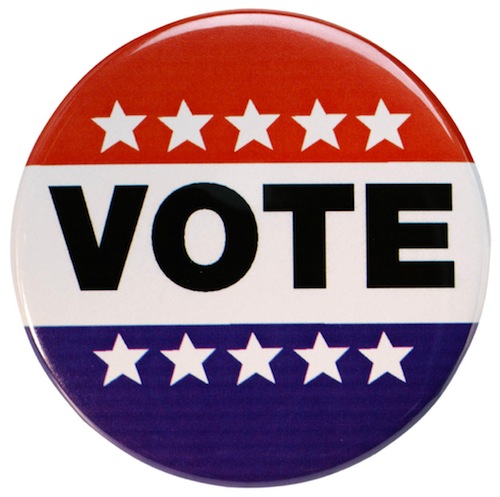(Note: The following is a guest post that was submitted to me. I occasionally solicit guest posts, and also occasionally accept them from people I trust.)
The national headlines have highlighted the increased turnout among Harris County voters, and rightfully so. But rather than discuss or project what that increase is likely to mean for election results, it is worth noting the actual mechanics of how so many of our neighbors are able to cast these early votes.
Chris Hollins, our Harris County Clerk, and his team have rolled out an impressive and imaginative early voting plan. Commissioner’s Court deserves credit for making the needed investments so that citizens in Harris County can safely access the ballot even during this pandemic.
Now I’ve been working in campaigns in Harris County since 2003, but this is the first time we have operated under a Democratic County Clerk for a general election. And the difference it has made is truly amazing, and I hope people can tell the subtle changes that are making a significant difference in giving voters access.
First, there is the timing. Governor Abbott’s decision to expand the normal 12 day early voting period to 18 days was critical to promoting a safer – and less crowded – voting experience. The tremendous turnout we have seen in the last 9 days would have packed polling locations without this additional time.
Days are made up of hours, and the investment by Harris County to keep polls open from 7am to 7pm is actual a big deal. Under previous clerks, early voting hours were restricted to the hours between 8:30am to 4:00pm during the first 5 days of early voting.
It is common sense and now self-evident that more people are turning out when the polls are open longer at more convenient times for voters.
What I want to point out is that proposition remains true in reverse: fewer voters access early voting when there are fewer hours.
While Harris County was operating under restrictive hours, Tarrant, Travis, and Dallas Counties all offered more hours for early voting. The Harris County excuse? It would cost more.
Having a Clerk who values democracy matters.
Second, locations – locations – locations. Today, there are 122 early voting locations around Harris County. In 2018, that number was close to 40. Again, this is not a difficult concept, but to see the scale of progress is really amazing.
Aside from tripling the number, nowhere is the location accessibility factor more visible than on our major college campuses. Having early voting locations at the University of Houston (Go Coogs!), Rice, and Texas Southern is a game changer.
In 2008, the closest early voting locations to each of these campuses was the Fiesta near NRG or the HCC Southeast location near I-45 South & 610.
For anyone familiar with Houston geography, these locations are not convenient – at all – to any of these campuses.
Again, Harris County choose not to place an easily accessible early voting locations before Hollins did for any general election. If you think this was an accident, I’d point to the campus openings of Rice in 1912, UH in 1939, and TSU in 1946. It should not take over 70 years to get an early vote site on these campuses.
Investing in over 100 locations in a county of 4.7 million should be the new normal – if the goal is to increase voter access and participation.
Finally, election day itself has been transformed to offer greater access. In campaign after campaign in the 2000s, the message of “you can early vote anywhere in the county” would quickly pivot to “you can ONLY vote in your neighborhood precinct.”
You wanna see a campaign manager in a panic? Tell them their election day doorhangers have the wrong polling location.
While Harris County clung to this system, Fort Bend creating election day Voting Centers, which allowed anyone in the county to vote at these locations on election day. It was an easy message to point toward a location where every voter in the county could vote. Another choice made that made voting less accessible.
Now, voters in Harris County can vote at ANY voting location on election day. For low propensity voters, the ease of pulling into a polling location and hearing, “yes, you can vote here,” again helps more voters participate in voting.
Timing, locations, and countywide access are all concrete policy changes that have been instituted by the Harris County Clerk since 2018. But these changes should not be the end point.
Even before the voting process begins, state policy looks to restrict access in ways that are laughable. The lack of online voter registration in Texas is a clear indictment of suppression policy. Despite statewide support for the policy, Senator Carol Alvarado faced opposition on her bill to create this online voter registration system by Republicans in Harris County.
Wonder why.
To be clear, the Texas Election Code allows for astronauts to voter from space . . . but does not allow for online voter registration. Seriously.
Online registration is less expensive, much cleaner with data input, and is unquestionable easier for citizens looking to register than mailing in an application.
Texans are choosing their new elected leaders right now. Much of the Texas political power structure does not want a larger voter turnout, which is directly reflected by the voting policy.
Harris County decided to invest in greater voter access. It is making a difference.
Bill Kelly works as the Director of Government Relations for Mayor Sylvester Turner. He has worked on the winning campaigns for Mayor Bill White (2003), State Rep. Hubert Vo (2004), Council Member Peter Brown (2005), State Rep. Ellen Cohen (2006), and the Harris County Coordinated Campaign (2008).


This is an excellent essay and I hope we continue the positive feedback loop with our votes this year.